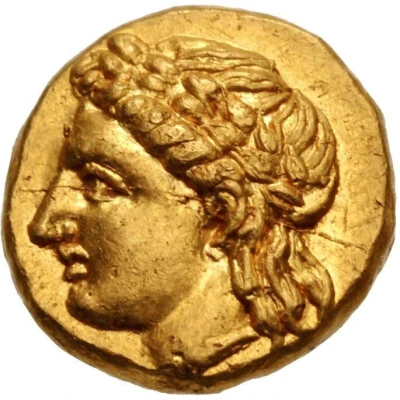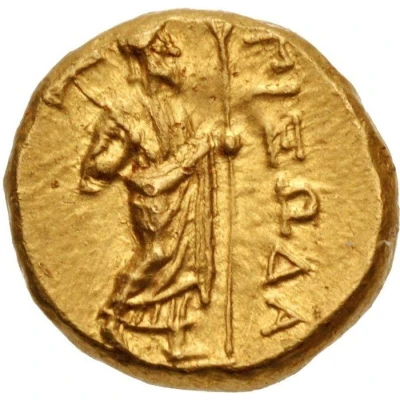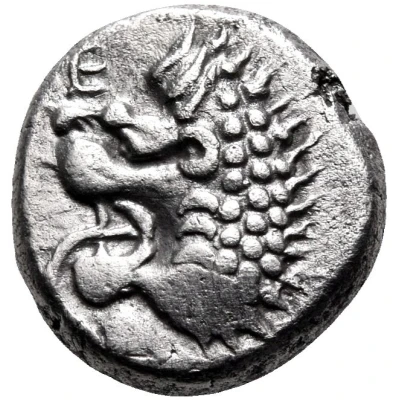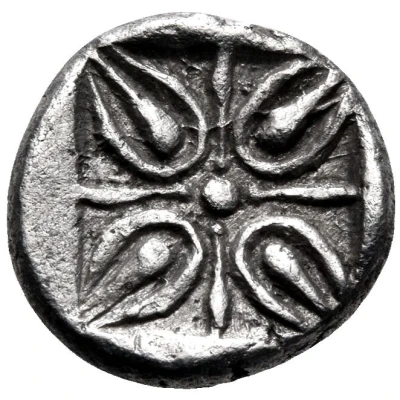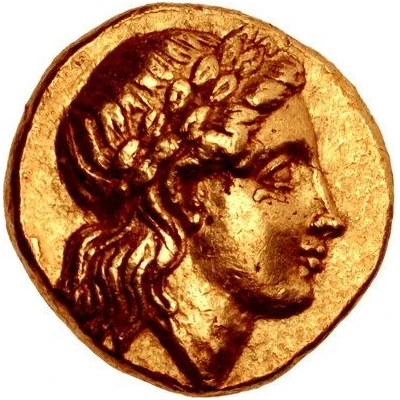
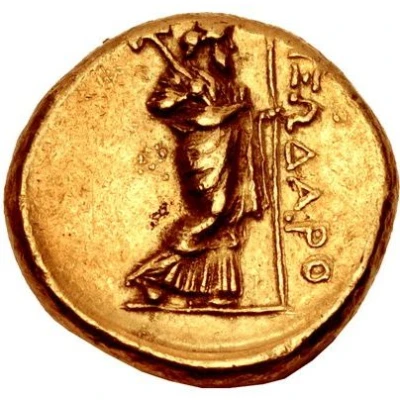

© Classical Numismatic Group, Inc.
Gold Hemistater - Pixodarus Halicarnassus 341 BC - 336 BC
| Gold | 4.15 g | 12.5 mm |
| Issuer | Achaemenid Satrapy of Caria (Achaemenid Satrapies) |
|---|---|
| Satrap | Pixodarus (340 BC - 334 BC) |
| Type | Standard circulation coin |
| Years | 341 BC - 336 BC |
| Value | ½ Daric |
| Currency | Persic daric |
| Composition | Gold |
| Weight | 4.15 g |
| Diameter | 12.5 mm |
| Shape | Round (irregular) |
| Technique | Hammered |
| Orientation | Medal alignment ↑↑ |
| Demonetized | Yes |
| Updated | 2024-10-10 |
| Numista | N#397468 |
|---|---|
| Rarity index | 100% |
Reverse
Zeus Labraundos standing to right, wearing a chiton and a himation, holding a double-headed axe and sceptre.
Script: Greek
Lettering: ΠΙΞΩΔΑΡΟ
Comment
BMC Caria, p. 184, 1; Traité II 108; cf. SNG von Aulock 2372 (quarter stater); cf. SNG Kayhan 897 (quarter stater).
Interesting fact
One interesting fact about the Gold Hemistater - Pixodarus (Halicarnassus) coin is that it features a unique blend of Persian and Greek influences in its design. The coin's obverse side bears the image of a Persian king, possibly Artaxerxes III, while the reverse side features a Greek legend and a depiction of the goddess Athena. This fusion of cultural styles reflects the multicultural nature of the Achaemenid Empire, which spanned across ancient Persia, Greece, and other regions.
